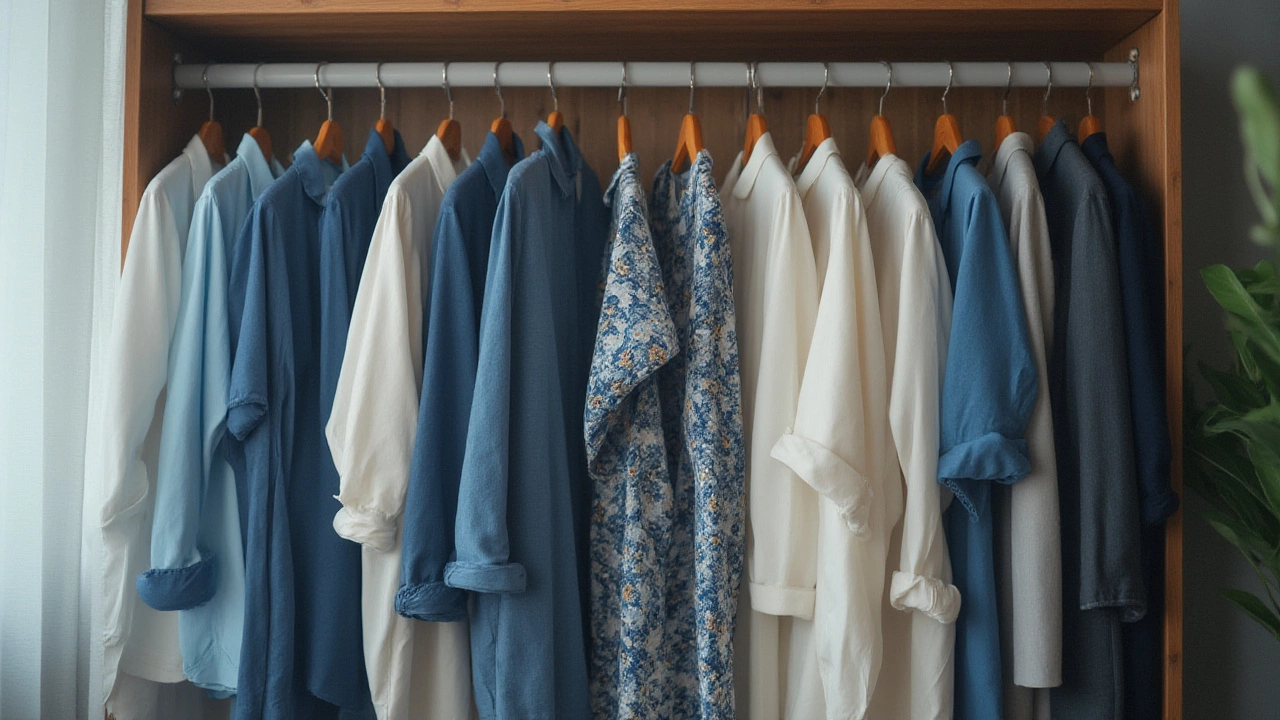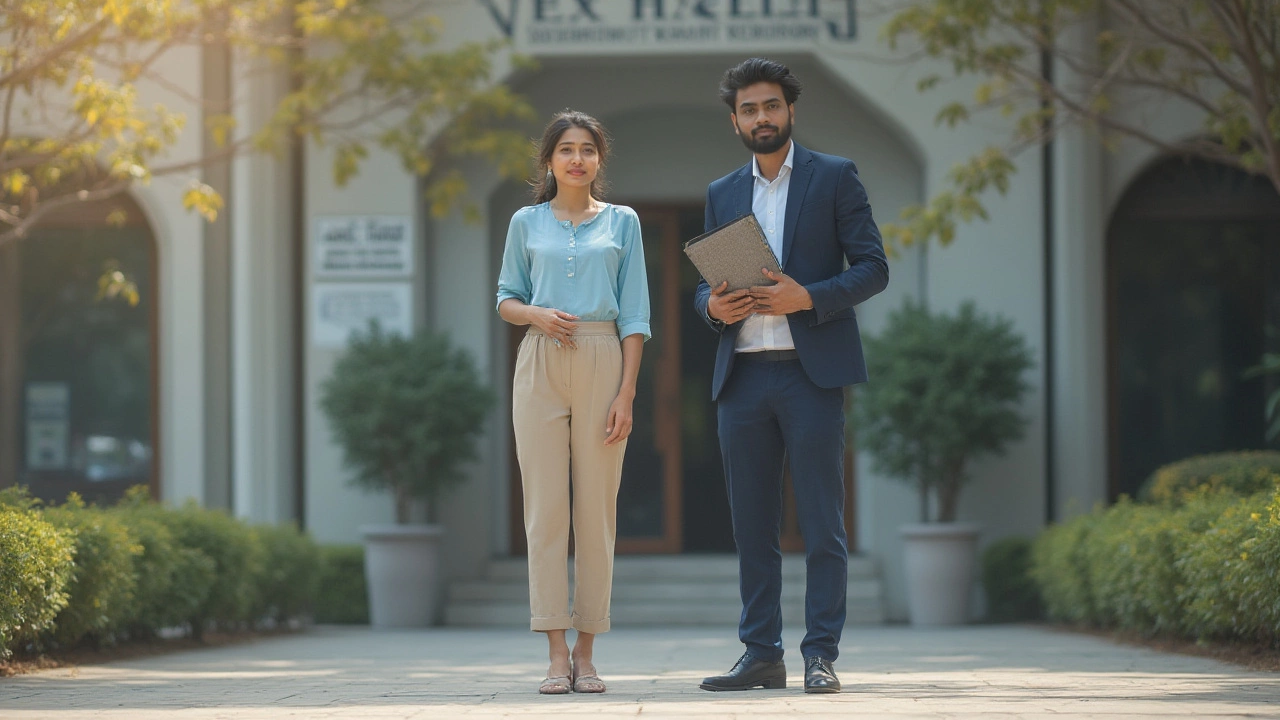Ever noticed how a first look can shape someone’s opinion of you long before you even say a word? There’s no exaggeration in the old saying that you never get a second chance to make a first impression—especially when you’re sitting across from a government recruiter. The stakes are high, the tension in the lobby is real, and the little things like a wrinkled sleeve can get under your skin. If you’ve ever sweated bullets over what tie goes with those slacks, you’re in excellent company. Nailing government job interview attire isn’t just about tradition or checking some boxes. It’s about sending every signal that you understand the values, culture, and expectations of one of the most scrutinized workplaces out there. Let’s cut the guesswork and figure out exactly what works—and what will absolutely not fly.
Understanding the Culture of Government Workplaces
Start by asking what image pops into your mind when you think of government offices. Honestly? Most of us imagine rooms filled with order, policies, and people who take protocol seriously. The unspoken dress code tends to be more conservative than in private companies, especially in countries like India, the US, or the UK. According to a 2023 Harvard Business Review survey, nearly 84% of government HR managers say that traditional professional attire positively impacts their impression of an applicant during interviews. Not a landslide shocker, right?
The rules tilt toward the formal: suits, pressed shirts, modest dresses, and polished shoes. There's not much room for edgy or experimental looks. Wild colors, loud patterns, or flashy accessories might not sit well here. They've hired people based on their ability to operate within a system, not just their skills, but also their awareness of boundaries. Clean lines, muted tones, and an overall neat appearance are safe bets.
In my experience, even if the department’s day-to-day office attire is relaxed, they expect interviewees to suit up—literally in many cases. If you’re ever unsure, consider what the most old-fashioned manager in that office might prefer, and you’re probably heading in the right direction. And remember, these expectations don’t shift just because the weather’s warm or the location seems informal. I remember Clarissa whispering before my own interview, “No one minds if you sweat a little, but they’ll remember if you look sloppy.”
Your choice of dress silently shows how seriously you’re taking this opportunity. For the vast majority of government roles—administrative positions, policy jobs, communications, law enforcement, and even teaching posts—looking the part is half the battle. So, if you’ve been Googling, “Is it okay to wear jeans to a government job interview?” here’s your answer: save the denim for another day.
Essential Attire for Men and Women: What Actually Works
Let’s get concrete. What should a man wear? What about a woman? The pressure’s real, and there are a million small choices, but the formula doesn’t have to be complicated. For men, think classic: a dark, well-fitted suit (navy or charcoal gray is unbeatable), a light-colored dress shirt (white or pale blue), a conservative tie (skip the cartoon prints), and polished dress shoes in black or dark brown. Pop on a simple leather belt, wear clean, dark socks, and keep the cologne light or skip it entirely. Neat hair, subtle grooming, and you’re all set.
For women, professional goes beyond just a pantsuit. You can ace it in a tailored skirt or pantsuit in a neutral color, with a blouse that doesn’t plunge or shine. Block-heeled shoes or loafers (closed-toe, always), minimal jewelry, and tidy hair will never let you down. Avoid glitter, jangling earrings, or anything that might distract the panel. If you lean toward makeup, aim for a natural look—think enhancing not transforming. Bags should be practical, not flashy. And just as with men, scent should be subtle.
Be ready for regional variations. In India, for example, women may also choose a formal saree or suit in subdued colors, and men can wear an ironed formal shirt with trousers if a suit feels too much. Go with what feels formal and respectful for your region and the specific government office. And if you’re interviewing virtually, don’t cut corners below the waist—one accidental stand-up and your secret’s out.
Checking off these essentials takes out half the guesswork. Stick to this checklist, and the last thing they’ll be talking about after your interview will be your socks.
| Men's Essentials | Women's Essentials |
|---|---|
| Dark suit (navy, charcoal) | Neutral skirt or pantsuit |
| Light dress shirt (white, blue) | Simple blouse |
| Conservative tie | Minimal jewelry |
| Polished dress shoes | Closed-toe shoes |
| Dark socks | Practical bag |

Common Mistakes and How to Avoid Them
Even the best intentions can misfire. Maybe you’ve done the rehearsals in front of the mirror, only to discover on interview day that your shirt’s gone transparent in direct light. Or maybe you went bold with your pocket square—only to realize no one else in the lobby even has one. Government recruiters notice everything, especially the things that don’t quite fit.
Here are some rabbit holes you want to dodge. Too much perfume or cologne can leave a room gasping for air. Loud colors and complicated patterns can make you stand out for the wrong reasons. “Casual Fridays” might exist in some offices, but don’t assume they start at the interview stage. Ill-fitted outfits are a big one—nothing says ‘unprepared’ as much as a blazer that’s too tight or pants pooling around your ankles. Shabby shoes, chipped nail polish, ungroomed facial hair, wrinkles on clothes, or dangling ID tags from a previous job—these all quietly move your name down the shortlist.
Long story short: put as much energy into prepping your attire as you do into preparing your answers. A study from UC Irvine in 2022 found candidates who looked polished and put-together were ranked 22% higher in “professionalism” by government panels. That's not a slight edge—it's the sort of number that swings decisions. If you know someone who works in a similar setting, ask for their honest feedback. You’ll get better insight than a Google search can ever offer.
Want a foolproof test? Try everything on a few days before, check yourself in different lights, and do a little test-walk in your shoes. You’d be amazed what discomfort or stains show up under bright interview lights. And don’t forget: confidence comes a lot easier when you’re not distracted by itchy collars or a top you’re forever tugging.
Tips for Standing Out While Fitting In
Sure, the safe route is always available—blend in, don’t ruffle feathers. But looking for ways to show a touch of your personality without breaking the “professional” spell? There’s wiggle room if you know the edges. Maybe it’s a well-chosen tie with a subtle stripe, a blouse with a whisper of texture, or a watch that mirrors your taste but isn’t shouting for attention. Just a single touch is enough; anything more can drown out your achievements.
The key is subtle confidence. Little signals—good posture, eye contact, an honest smile—can make every part of your outfit work harder for you. Bring a crisp folder or portfolio for your documents (no battered backpack), and keep your phone out of sight and on silent. If you wear glasses, make sure they’re clean—not smudged. These details say, “I sweat the small stuff because the small stuff matters.”
And yes, research actually backs this up. According to a 2024 LinkedIn survey, nearly 68% of government hiring managers said that the way an applicant presented their materials (not just their outfit) gave them insight into their overall work ethic and attention to detail. Perfect your handshake, know how you’ll introduce yourself, and be ready to hand over a tidy resume. First appearances might open the door—but it’s every small detail that gets you invited back for round two.
So, when you’re stressing over what to wear, remember it’s not about being boring. It’s about showing you get it: you understand the job, you respect the process, and you know how to play by the rules when it matters. That’s the stuff that makes you impossible to forget.
If you’ve made it this far, you’re already ahead of the pack—because you know dressing for a government job interview is a skill all its own. This one’s not a fashion show, but it’s definitely not the time to blend into the wallpaper, either. Aim for confident, credible, and just the right dash of yourself. It pays off, and your interviewer will notice more than you think.

